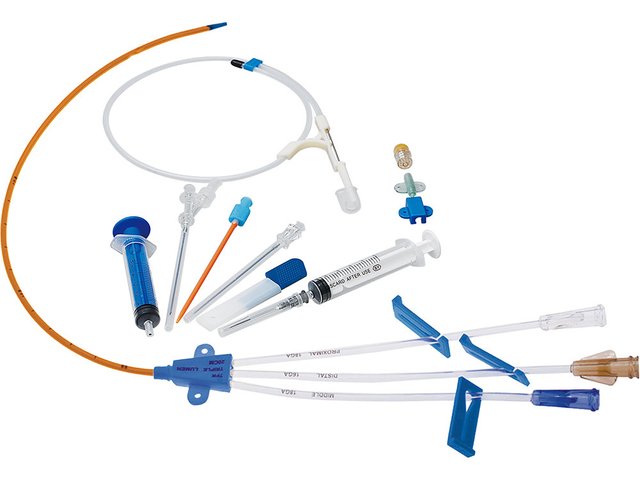Advancements in Antimicrobial Coated Catheters: Redefining Infection Control
Antimicrobial Coated Central Venous Catheter Market Size, Share, and COVID-19 Impact Analysis, By Application(ICU, Non-ICU, and others), By End User(Hospitals, Ambulatory Surgical Centers, Specialty Clinics), By Region(North America, Europe, Asia Pacific, Latin America, and Middle East & Africa) and Regional Forecast, 2023-2030
Antimicrobial-coated central venous catheters (CVCs) are catheters that have been coated with an antimicrobial agent to prevent the growth of bacteria. These catheters are used to deliver fluids, medications, and blood products to patients, and they are also used for long-term vascular access.
This Market is witnessing several emerging trends. One of the prominent trends is the increasing research and development activities aimed at improving catheter technology. Companies are investing in the development of catheters with advanced antimicrobial coatings to reduce infection rates further.
Get More Insights: https://www.fortunebusinessinsights.com/antimicrobial-coated-central-venous-catheter-market-107805
Trends
The antimicrobial-coated CVC market is expected to continue to grow in the coming years, driven by the following trends:
Increasing prevalence of HAIs: HAIs are a major cause of morbidity and mortality in hospitals, and they are estimated to cost the US healthcare system billions of dollars each year. Antimicrobial-coated CVCs can help to reduce the risk of HAIs by preventing the growth of bacteria on the catheter surface.
Rising demand for long-term vascular access: The demand for long-term vascular access is growing, due to the increasing number of patients who require long-term treatment with fluids, medications, and blood products. Antimicrobial-coated CVCs can help to reduce the risk of infection in patients who require long-term vascular access.
Technological advancements: There have been significant technological advancements in antimicrobial coating technologies in recent years. These advancements have made it possible to develop more effective and durable antimicrobial coatings.
Segmentation
The antimicrobial-coated CVC market is segmented by product, application, and region.
The product segment is further segmented into single-lumen and multi-lumen. Single-lumen catheters are the most common type of CVC, and they are used to deliver fluids, medications, and blood products. Multi-lumen catheters are used for long-term vascular access, and they can be used to deliver multiple fluids or medications simultaneously.
The application segment is further segmented into hemodialysis, parenteral nutrition, and chemotherapy. Hemodialysis is a procedure used to remove waste products from the blood, and it is the most common application for antimicrobial-coated CVCs. Parenteral nutrition is a method of providing nutrients through the veins, and it is also a common application for antimicrobial-coated CVCs. Chemotherapy is a cancer treatment, and it is sometimes administered through a CVC.
The region segment is further segmented into North America, Europe, Asia-Pacific, and Latin America. North America is the largest market for antimicrobial-coated CVCs, due to the high prevalence of HAIs and the early adoption of new technologies.
Key Players
The key players in the antimicrobial-coated CVC market include B. Braun Melsungen, Teleflex, Smiths Medical, Vygon, and Cook Medical. These companies are investing in research and development to develop new and innovative antimicrobial-coated CVC technologies.
Conclusion
The antimicrobial-coated CVC market is a growing market, and it is expected to continue to grow in the coming years. The market is being driven by the increasing prevalence of HAIs, the rising demand for long-term vascular access, and the technological advancements in antimicrobial coating technologies.
